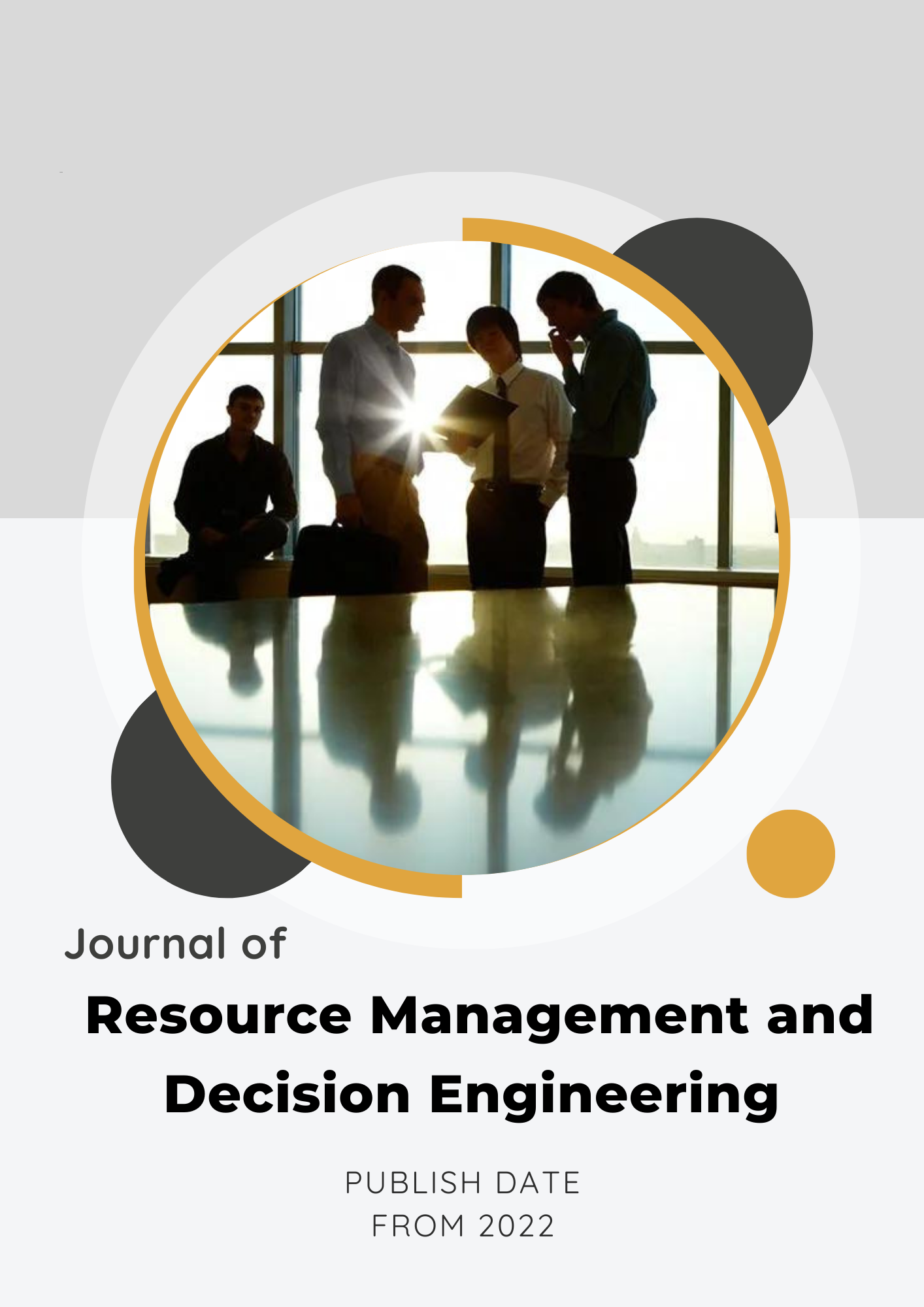Development of a Construction Waste Management Model Based on Design and Execution Decisions with a Reduce, Reuse, and Recycle (3R) Approach: A Case Study in Sanandaj Using Fuzzy Analytic Network Process (FANP)
Keywords:
waste management, construction site waste, construction debris, project managementAbstract
This study aims to develop a comprehensive model for construction waste management based on design and execution decisions, employing a reduce, reuse, and recycle (3R) approach in the city of Sanandaj. To this end, the Fuzzy Analytic Network Process (FANP) method was applied to identify and prioritize the key factors influencing construction waste management. The model seeks to identify existing barriers and challenges in managing construction waste and to propose strategies for optimizing the processes of waste reduction, material reuse, and recycling. The findings of this research indicate that among the various criteria, the incompatibility of transportation equipment with the type and quantity of materials had the most significant impact on waste management across project components. In addition, other critical sub-criteria such as insufficient awareness of designers regarding the project's execution details, lack of adequate practical experience among designers, and misalignment between material procurement and stakeholder expectations were also identified as influential factors in optimal waste management. These results demonstrate that design and execution decisions play a crucial role in minimizing construction waste, and that precise planning can contribute to cost reduction and environmental impact mitigation. The proposed model can serve as a framework for policymakers and construction project implementers, enabling them to adopt efficient policies and make informed decisions at various stages of the project. Ultimately, the model aims to support better construction waste management practices and promote sustainable building initiatives.
References
Al Tawil, L., Massoud, M. A., Bardus, M., & Alameddine, I. (2023). Disaster waste management challenges and enabling factors for strategic planning: The case of the Beirut Port explosion. Waste Manag Res, 41(8), 1382-1389. https://doi.org/10.1177/0734242x231151602
Amrani, M., Taha, Y., Elghali, A., Benzaazoua, M., Kchikach, A., & Hakkou, R. (2021). An experimental investigation on collapsible behavior of dry compacted phosphate mine waste rock in road embankment. Transportation Geotechnics, 26, 100439. https://doi.org/10.1016/j.trgeo.2020.100439
Asadi, S., Pourhashemi, S. O., Nilashi, M., Abdullah, R., Samad, S., Yadegaridehkordi, E., & Razali, N. S. (2020). Investigating influence of green innovation on sustainability performance: A case on Malaysian hotel industry. Journal of Cleaner Production, 258, 120860. https://doi.org/10.1016/j.jclepro.2020.120860
He, L., & Yuan, H. (2020). Investigation of construction waste recycling decisions by considering consumers' quality perceptions. Journal of Cleaner Production, 259, 120928. https://doi.org/10.1016/j.jclepro.2020.120928
Illankoon, I. C. S., & Tam, V. W. (2021). Life Cycle Costing for Decision Making in Construction and Demolition Waste Management: A Critical Review. In Collaboration and Integration in Construction, Engineering, Management and Technology (pp. 163-169). https://doi.org/10.1007/978-3-030-48465-1_28
Ingrao, C., Bacenetti, J., Adamczyk, J., Ferrante, V., Messineo, A., & Huisingh, D. (2019). Investigating energy and environmental issues of agro-biogas derived energy systems: A comprehensive review of Life Cycle Assessments. Renewable Energy, 136, 29607. https://doi.org/10.1016/j.renene.2019.01.023
Ishak, N. (2024). Elucidation of the Influence of Construction Waste Causative Factors and Strategies Towards Sustainable Construction Waste Management Improvement. Iop Conference Series Earth and Environmental Science, 1303(1), 012040. https://doi.org/10.1088/1755-1315/1303/1/012040
Jain, S., Singhal, S., & Jain, N. K. A. U. B. K. (2020). Construction and demolition waste recycling: Investigating the role of theory of planned behavior, institutional pressures and environmental consciousness. Journal of Cleaner Production, 263, 121405. https://doi.org/10.1016/j.jclepro.2020.121405
Khoshnevis, M., alami, f., & Sarraf, A. (2023). Risk analysis of water and wastewater infrastructure projects based on public-private partnership (3P) approach by combining Fuzzy Delphi (FD), FMEA and artificial fuzzy assessment (FSE) techniques. Journal of Structural and Construction Engineering, 9(11), 77-100. https://doi.org/10.22065/jsce.2022.315454.2644
Mak, T. M., Iris, K. M., Wang, L., Hsu, S. C., Tsang, D. C., Li, C. N., & Poon, C. S. (2019). Extended theory of planned behaviour for promoting construction waste recycling in Hong Kong. Waste Management, 83, 161-170. https://doi.org/10.1016/j.wasman.2018.11.016
Meng, X., Tan, X., Wang, Y., Wen, Z., Tao, Y., & Qian, Y. (2019). Investigation on decision-making mechanism of residents' household solid waste classification and recycling behaviors. Resources, Conservation and Recycling, 140, 224-234. https://doi.org/10.1016/j.resconrec.2018.09.021
Musarat, M. A., Irfan, M., Alaloul, W. S., Maqsoom, A., Thaheem, M. J., & Rabbani, M. B. A. (2022). Circular Economy: Recent Advances in Sustainable Construction Waste Management. https://doi.org/10.5772/intechopen.105050
Razkenari, M., Fenner, A., Shojaei, A., Hakim, H., & Kibert, C. (2020). Perceptions of offsite construction in the United States: An investigation of current practices. Journal of Building Engineering, 29, 101138. https://doi.org/10.1016/j.jobe.2019.101138
Riyahipur, M., Kalantari, M., & Piri, I. (2020). Crisis Management and Planning in Urban Water Supply Facilities Using Passive Defense Approach (Case Study: Yasouj City). Journal of Water and Wastewater; Ab va Fazilab ( in persian ), 31(2), 130-136. https://doi.org/10.22093/wwj.2019.91349.2445
Seror, N., & Portnov, B. A. (2020). Estimating the effectiveness of different environmental law enforcement policies on illegal C&D waste dumping in Israel. Waste Management, 102, 241-248. https://doi.org/10.1016/j.wasman.2019.10.043
Veropalumbo, R., Russo, F., Viscione, N., Biancardo, S. A., & Oreto, C. (2021). Investigating the rheological properties of hot bituminous mastics made up using plastic waste materials as filler. Construction and Building Materials, 270, 121394. https://doi.org/10.1016/j.conbuildmat.2020.121394
Downloads
Published
Submitted
Revised
Accepted
Issue
Section
License
Copyright (c) 2026 Omid Ostadnorouzi (Author); Babak Aminnejad; Alireza Lork (Author)

This work is licensed under a Creative Commons Attribution-NonCommercial 4.0 International License.









